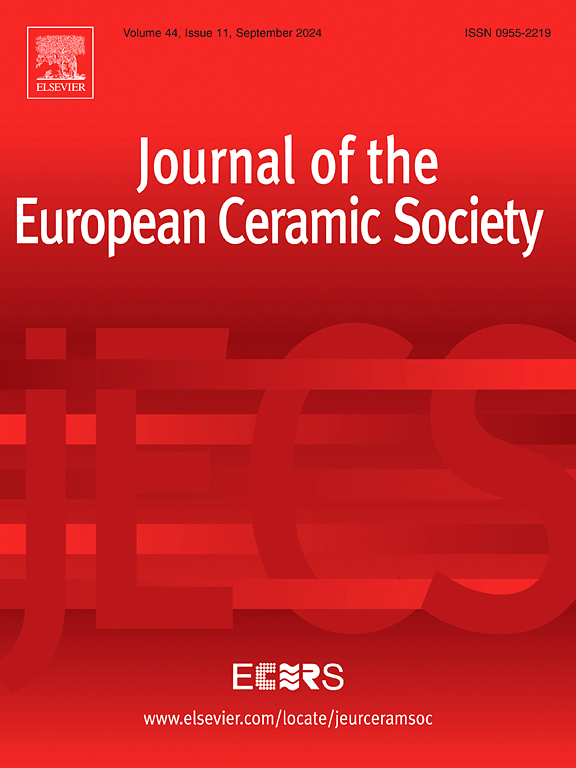碳化锆陶瓷的辐射缺陷形成与相演化
IF 5.8
2区 材料科学
Q1 MATERIALS SCIENCE, CERAMICS
Journal of The European Ceramic Society
Pub Date : 2025-05-08
DOI:10.1016/j.jeurceramsoc.2025.117521
引用次数: 0
摘要
本文采用实验和计算两种方法研究了γ射线辐照下碳化锆纳米晶中缺陷的演化过程。利用正电子湮没光谱(PAS)和拉曼光谱(Raman Spectroscopy)表征了ZrC样品的辐射缺陷、结构变化和振动模式。密度泛函理论(DFT)计算表明,随着辐照剂量的增加,ZrC晶格中的位移损伤增加,缺陷的增加导致杨氏模量显著降低,硬度降低。3000 kGy的辐照通过产生可能与现有缺陷结合形成更大空位团簇的碳空位来增强缺陷的演化。在吸收剂量为3000 kGy时,在1795 cm−1处发现了一个由Sp2 C-C引起的新拉曼光谱。ID/IG波段的强度比从1.133(初始)下降到1.09(3000 kGy),反映了非晶化和氧化层的形成。这些发现为进一步研究优化zrc基材料的辐射耐受性提供了基础。本文章由计算机程序翻译,如有差异,请以英文原文为准。
Radiation-induced defect formation and phase evolution in zirconium carbide ceramics
In this work, the evolution of defects in zirconium carbide (ZrC) nanocrystals under gamma irradiation was studied using both experimental and computational approaches. Positron Annihilation Spectroscopy (PAS) and Raman spectroscopy were used to characterize radiation-induced defects, structural changes, and vibrational modes in ZrC samples. Density Functional Theory (DFT) calculations revealed that the displacement damage in the ZrC lattice increased with irradiation dose, and the increase in defects led to a significant decrease in Young's modulus and to lower hardness. Irradiation at 3000 kGy enhances defect evolution by creating carbon vacancies that potentially combine with existing defects to form larger vacancy clusters. In the Raman spectra, a new peak due to Sp2 C-C was detected at 1795 cm−1 at an absorption dose of 3000 kGy. The intensity ratio of the ID/IG band decreased from 1.133 (initial) to 1.09 (3000 kGy), reflecting amorphization and the formation of an oxide layer. These findings provide a foundation for future investigations aimed at optimizing the radiation tolerance of ZrC-based materials for advanced nuclear applications.
求助全文
通过发布文献求助,成功后即可免费获取论文全文。
去求助
来源期刊

Journal of The European Ceramic Society
工程技术-材料科学:硅酸盐
CiteScore
10.70
自引率
12.30%
发文量
863
审稿时长
35 days
期刊介绍:
The Journal of the European Ceramic Society publishes the results of original research and reviews relating to ceramic materials. Papers of either an experimental or theoretical character will be welcomed on a fully international basis. The emphasis is on novel generic science concerning the relationships between processing, microstructure and properties of polycrystalline ceramics consolidated at high temperature. Papers may relate to any of the conventional categories of ceramic: structural, functional, traditional or composite. The central objective is to sustain a high standard of research quality by means of appropriate reviewing procedures.
 求助内容:
求助内容: 应助结果提醒方式:
应助结果提醒方式:


